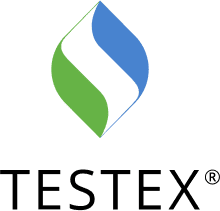Digitalisation has not only revolutionised business models, it has also changed the requirements for IT infrastructures. Cloud computing not only enables scalability and flexibility, but also integrates the latest technology trends such as edge computing, the Internet of Things (IoT) and machine learning. Companies that ignore these trends risk being left behind and suffering competitive disadvantages. They need to consider IT modernisation and the use of suitable cloud computing services.
Cloud migration: when, why and how does it make sense?
The challenge is to recognise the optimal time for cloud migration. A comprehensive look at the existing IT infrastructure is essential for this. This not only takes into account scalability and performance requirements, but also individual business objectives. Companies should ask themselves the following questions:
The decision in favour of the cloud: when is the right time?
Can my existing infrastructure keep pace with the growing volume of data and workloads?
Does my current software fulfil the requirements for fast, reliable and secure data processing?
To what extent does my IT infrastructure support the company’s long-term goals, particularly with regard to digitalisation and increased efficiency?
By definition, the cloud works by storing data and applications on servers distributed in data centres around the world. These servers can process huge amounts of data and offer high security standards to protect the data from loss or unauthorised access.
There are different types of cloud services in the cloud:
Infrastructure as a Service (IaaS): this allows companies to rent virtual computers, storage and networks instead of buying physical servers. It’s like renting a virtual room in the cloud warehouse to store your stuff.
Platform as a Service (PaaS): This provides developers with a platform on which they can develop, test and deploy applications without having to worry about the underlying IT infrastructure. Similar to leasing a piece of land on which you can build a house without having to worry about utilities and roads.
Software as a Service (SaaS): These are applications that are provided via the Internet, such as e-mail services, collaboration tools or CRM software. Here you use the services directly via the Internet, similar to renting a flat and using the available amenities.
A detailed cost-benefit analysis, which takes into account both ongoing operating costs and potential savings, will provide companies with a sound basis for making a successful cloud computing decision.
Using the cloud enables selective and on-demand resource utilisation, meaning that companies only pay for the resources they actually use. This “pay as you go” model offers a cost-effective alternative to purchasing and operating your own server infrastructure and services. Thanks to the flexible scalability and billing according to actual usage, companies can optimise their costs and use resources more effectively.
Moving to the cloud is not only a technological necessity, but also a strategic decision to remain competitive. Companies should be aware of the following signs:
Why in the cloud?
Outdated infrastructure: if the existing hardware and software is outdated and no longer meets current requirements.
High operating costs: If the maintenance and updating of the existing infrastructure causes high running costs.
Insufficient scalability: If the company has difficulty reacting flexibly to seasonal or growing requirements.
Migrating to the cloud poses challenges, but these can be overcome with careful planning and professional support. Among the most common challenges are data security and compliance. To address data security concerns, it is important to select trusted cloud services and implement appropriate security measures. In terms of compliance, a thorough knowledge of legal requirements is crucial and working with experienced experts during the migration process can ensure that all regulations are adhered to. Another aspect is the integration of legacy systems, which is made possible by a step-by-step migration and the use of suitable integration technologies. In this way, legacy systems can be seamlessly transferred to the cloud to maximise the benefits of cloud computing.
Companies that are not aware of the extensive potential of the cloud and are faced with a shortage of internal IT resources benefit from soxes AG’s expertise in cloud technologies. The support of our cloud specialists enables a smooth and efficient cloud migration that not only fulfils the technological requirements but also ensures successful integration into the corporate structure. soxes AG has extensive experience in overcoming these challenges and offers customised solutions for a smooth cloud migration.
How can my company securely access the cloud?
Secure migration to the cloud requires careful planning, comprehensive analysis and the right strategies. Here are steps and considerations that organisations should take into account to ensure a secure transition to the cloud:
Detailed needs analysis:
1. conduct a comprehensive analysis of your business goals and IT requirements.
2. identify the data and applications to be migrated and those that should remain in the local infrastructure
3. perform a risk analysis to identify potential security risks
4. assess compliance requirements and security-related regulations
5. differentiate between public cloud, private cloud or hybrid clouds and select the appropriate cloud provider according to company requirements
6. define clear access policies and implement strict access controls to your new cloud platform.
By consistently implementing these steps and working with experts, a company minimises potential risks and ensures a secure and successful migration to the cloud. Are you unsure whether your IT solutions belong in the cloud? Do you lack the expertise? Do you need a guide for a secure and effective cloud migration? Our cloud consulting package will answer all your questions.
Do you have any questions? Would you like to find out more about our services?
We look forward to your enquiry.

Sofia Steninger
Solution Sales Manager
















































